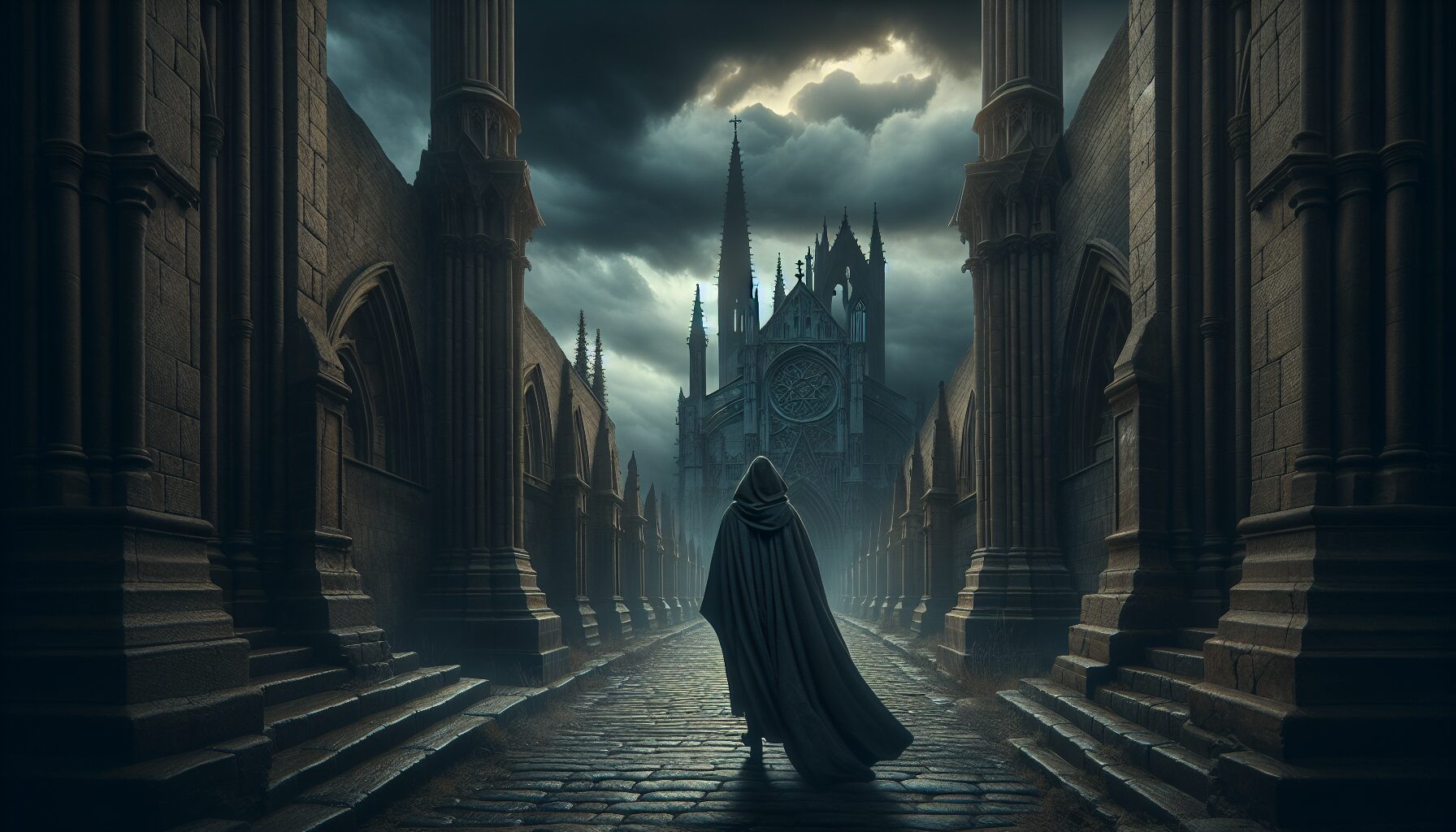The realm of the Gothic has long captivated the human imagination, offering both solace and stimulus in its shadowed corners. It embodies a twilight space where philosophy and aesthetics meet, allowing exploration of fear, fascination, and the unknown. This article seeks to navigate through the conceptual and historical labyrinth, aiming to uncover the philosophical underpinnings of the Gothic tradition.
Understanding the Gothic: Roots and Relevance
The Gothic, as both a literary and architectural form, originated in the late medieval period. Initially, it was characterized by towering cathedrals and castles designed to inspire both awe and introspection. It wasn’t until the late 18th century, however, that the Gothic truly unfolded its philosophical layers with the emergence of Gothic literature.
“The Gothic mode is essentially about subjectivity and extreme emotions. It stages the drama of the mind’s gestative chaos and confronts its audience with a fantastic panorama of inward terror.”
– Jerrold E. Hogle, in The Cambridge Companion to Gothic Fiction
As Hogle suggests, the Gothic is deeply entrenched in the exploration of the human psyche. This exploration manifests as a fascination with psychological turmoil and the dark recesses of consciousness. A world of shadows invites the reader to embrace ambiguity and complexity.
The Philosophical Journey: Key Themes and Reflections
1. The Sublime and the Beautiful
The concept of the sublime, as articulated by 18th-century philosopher Edmund Burke, is central to understanding the Gothic aesthetic. Burke distinguished the sublime from the beautiful by highlighting its capacity to instill awe through elements of terror and grandeur. The Gothic landscape—whether literary or architectural—is steeped in examples of the sublime, from windswept moors to crumbling ruins.
- Immanuel Kant: Expanded on the idea of the sublime, describing it as an indirect pleasure stemming from the mind’s struggle against its own limitations.
- Mason Cooley: “Prominent among the personalities involved in the subject matter is the protagonist’s mind itself, caught between its fears and desires.”
2. The Uncanny
The concept of the uncanny, developed by Sigmund Freud, is also pivotal in Gothic philosophy. Freud defines the uncanny as something familiar yet alien, a sensation that evokes discomfort and cognitive dissonance. In the Gothic tradition, the uncanny manifests through the blurred boundaries between reality and imagination, suggesting that what terrifies us most lies just beneath the surface of the known world.
“The uncanny has been the Gothic emotion par excellence, making readers painfully aware of the thin line between sanity and madness.”
– David Punter, author of The Literature of Terror
3. The Doppelgänger and Fragmented Identity
Another recurrent theme is that of the doppelgänger, or the ‘double.’ This concept embodies the fear of the self and the threat of inner chaos. The doppelgänger serves as a reminder of the potential for internal division within the individual, revealing a constant struggle to maintain a coherent identity.
- Robert Louis Stevenson’s The Strange Case of Dr Jekyll and Mr Hyde stands as a poignant exploration of duality and moral disintegration.
- Mary Shelley’s Frankenstein delves into the consequences of unchecked ambition and the duplicity of human nature.
From Shadows to Substance: The Legacy of Gothic Philosophy
The Gothic journey does not merely rest in conjuring images of gloom but traverses deeper philosophical inquiries related to human nature and society. Its legacy is apparent in contemporary culture, influencing films, art, and even psychology. In cinema, figures such as Alfred Hitchcock and Guillermo del Toro have embraced Gothic aesthetics to elevate themes of suspense and moral complexity.
Moreover, the digital age has witnessed a revival of Gothic themes in online media and video games. Psychological horror games like Amnesia: The Dark Descent and literary revivals through online platforms continue to captivate new generations.
The Gothic Pilgrim in Reflection
As we navigate this shadowed philosophy, we align ourselves with the Gothic pilgrim—a seeker of truth through darkness. Engaging with the Gothic fosters an awareness of life’s inherent contradictions and complexities. It urges embracing our fears as natural facets of existence and welcomes paradox as a path to deeper understanding.
In essence, the Gothic invites us to ponder fundamental questions: What is the nature of evil? Can the soul ever be truly divided? These questions resonate across time, as applicable today as in the past. As long as humans grapple with these enigmas, the Gothic will remain a poignant guide through the shadowed corridors of thought and emotion.
For further exploration into Gothic philosophy, consider delving into the following works:
From its shadowy origins to its pervasive presence in modern culture, the Gothic continues to illuminate the dark corners of human consciousness, challenging us to confront both the known and the unknowable.

